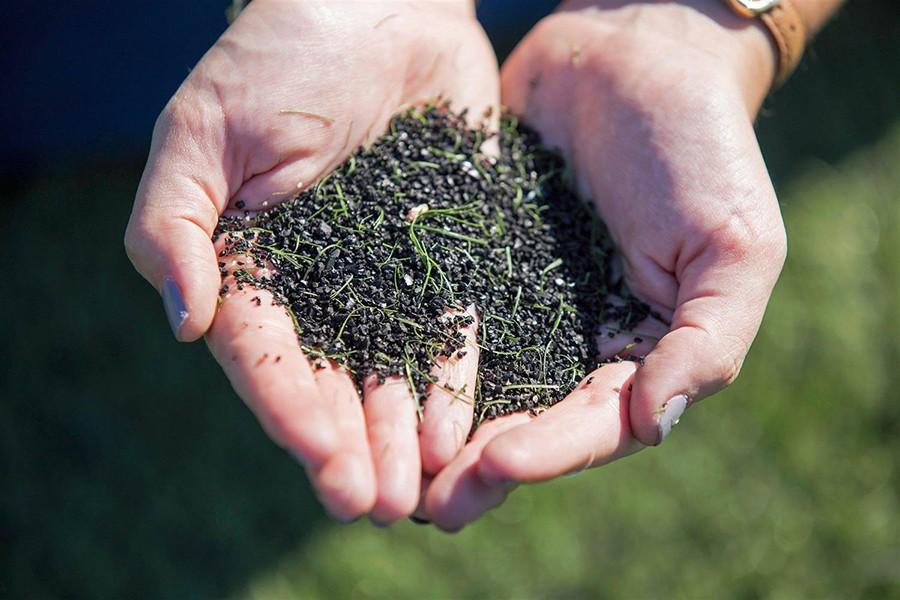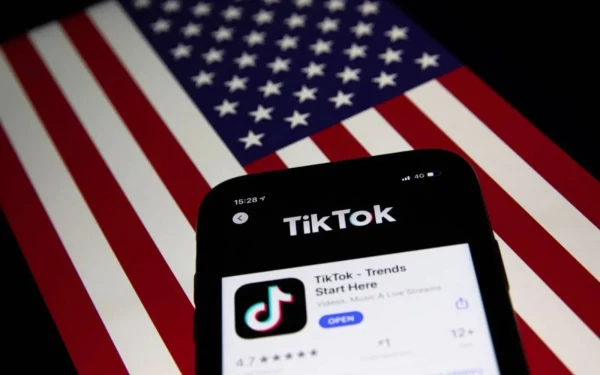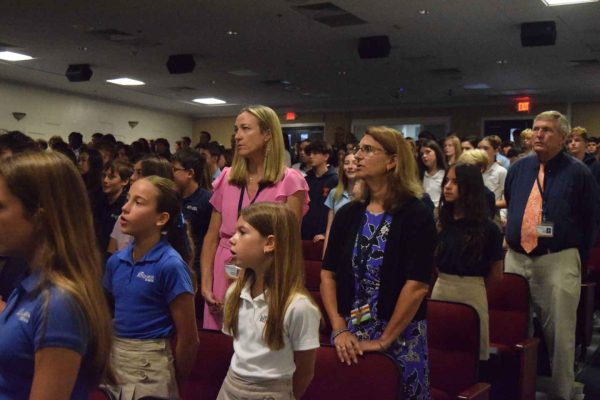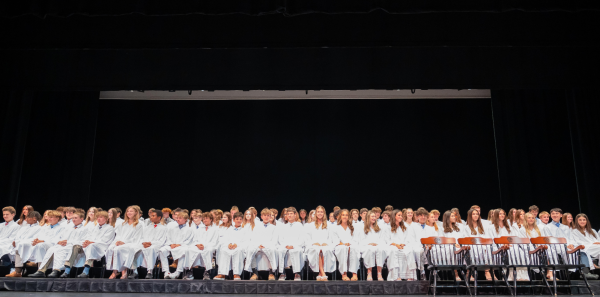Are Our Fields Safe?
The Neersyde investigates the safety of the artificial turf on the athletic fields at the Upper School.
There are people who are still debating the health risks posed by crumb rubber (pictured here), which is used as infill for the Upper School’s artificial turf.
With the emphasis on athletics at TBS and the large number of sports offered at the School, it makes sense that Benjamin would do everything possible to ensure its playing fields could be used as much as possible for as little cost as possible. That’s why the Upper School installed artificial turf on it’s football field and lacrosse/soccer field two years ago. Those fields now join the more than 11,000 artificial turf fields used across the spectrum of pro, college, high school, and youth sports in the U.S. The benefits of having artificial turf, as opposed to grass, are many according to Ryan Smith ’94, Benjamin’s athletic director.
“The conversion to turf allows use the field theoretically 365 days a year and 24 hours day as the field has lights,” explained Smith. “In the past we did not practice on the field due to wear and tear, therefore our boys’ lacrosse team had to practice off campus. This was quite difficult as a large team such as ours had to be transported off campus, and we had to find field space for them to practice on. The turf field allows us to practice on the field, which we could not do prior to [its] addition.”
Smith also points out that the yearly operating cost to maintain the field is significantly less now since the field doesn’t need to watered, mowed, and re-seeded. In addition, it’s a bit of a financial boon in the sense that the field can now be rented out to other schools or organizations who need the playing space.”
“The conversion to turf allows us to rent the field on a limited basis,” said Smith. This has also allowed us to expose our school to prospective families that otherwise might not have seen our facility and has allowed for community outreach. That was not possible before [the turf].”
With the number of advantages that comes with artificial turf, it would make sense for the football field on the Lower/Middle School Campus to make the conversion from grass as well.
“Artificial turf is expensive but yes, their are plans to get artificial turf at the Lower School,” said Benjamin Middle School Athletic Director Mr. Toby Harbeck. “The problem is that it’s a major campaign and it’s something you have to set aside $800,000 for. The tuition only covers 80 percent of the school’s daily costs and the rest comes from donations, so it has the chance to take quite a while.”
However, the Lower/Middle School Campus may be fortunate that no immediate plans for artificial turf have been made because some concerns have been raised about its safety. Artificial turf is composed of small bits of scrap rubber made from automobile tires. According to a study by Environment and Human Health, Inc., these small chunks of tire, called “crumb rubber,” contain harmful chemicals such as phenol, n-hexadecane, and carcinogens. Some people believe that those tiny black granules which make up the turf can find their way into an athlete’s bloodstream via their mouths, noses, and cuts. Furthermore, they fear the chemicals may leach into the air because the artificial turf surfaces can become 10-15 degrees hotter than the surrounding temperatures.
One of those people is Amy Griffin, associate head coach for the University of Washington’s women’s soccer team. According to an NBC News article by Hannah Rappleye published in 2014, Griffin made a startling discovery after visiting a soccer player who was being treated for cancer at a local hospital. According to Rappleye’s article, “that day, the nurse looked down at the woman Griffin was sitting with and said, ‘Don’t tell me you guys are goalkeepers. You’re the fourth goalkeeper I’ve hooked up this week.’
Troubled by the nurse’s observation, Griffin did some research on her own and discovered that 38 soccer players across the United States – 34 of them goalies – have been diagnosed with cancer, mostly blood cancers like leukemia and lymphoma.
“‘I’ve coached for 26, 27 years,’ Griffin said. “‘My first 15 years, I never heard anything about this. All of a sudden it seems to be a stream of kids.’”
Yet, according to a 2015 Science News article (www.sciencenews.org) by Beth Mole, “Academic scientists and government agencies have done small surveys [about the possible health risks posed by artificial turf]” and “with few exceptions, researchers have found no evidence of exposure or exposure at such low doses that there’s little risk of harm. In fact, some studies have found that if there is uptake of chemicals, it’s at doses equivalent to those found in food and the rest of the environment. And no scientific study has found an association between exposure to artificial turf and cancer.”
However, Rappleye’s piece notes that “environmental advocates want the Environmental Protection Agency and the Consumer Product Safety Commission to take a closer look [at the effects of artificial turf]. While both the CPSC and the EPA performed studies over five years ago, both agencies recently backtracked on their assurances the material was safe, calling their studies ‘limited.’ But while the EPA told NBC News in a statement that ‘more testing needs to be done,’ the agency also said it considered artificial turf to be a ‘state and local decision,’ and would not be commissioning further research.”
The Benjamin School is aware of these concerns and has even conducted its own investigation as a result. “The Benjamin School Board of Trustees…has pursued the issue with leading experts,” noted Smith. “Results of our investigation seem to render inconclusive any scientific data relating crumb rubber to cancer. In addition, we are not aware of any scientific research that indicates crumb rubber causes cancer.”
Mr. Edward Chaplin, a middle school math teacher and the girls’ varsity soccer team’s head coach, agrees. “I know very well of the dangers they say come with artificial turf and I do not think that the cancers they are finding are coming from the turf,” said Chaplin. “So I think my team is safe.”
When it comes to how parents feel about the issue, there are differing views. “I am not very concerned about this because [the health risk] is unconfirmed,” said TBS parent Mr. Christopher Zecca, who has child in both the Middle School and Upper School. “I mean, I’m more worried about what in my boy’s shampoo then this.”
Yet there are some parents out there who are still skeptical. “Yes I am concerned about this factor since I have never heard of this,” said TBS parent Mrs. Mabel Nachilly, whose son, Sebastian, is a seventh grader. “Even if it is just a unconfirmed risk, I a still nervous for Sebastian.”
The bottom line in the turf debate seems to be that until there is hard data linking health risks to artificial turf, it is here to stay at the Upper School. In addition, it may just be a matter of time and money until it’s installed at the Lower/Middle School Campus.





